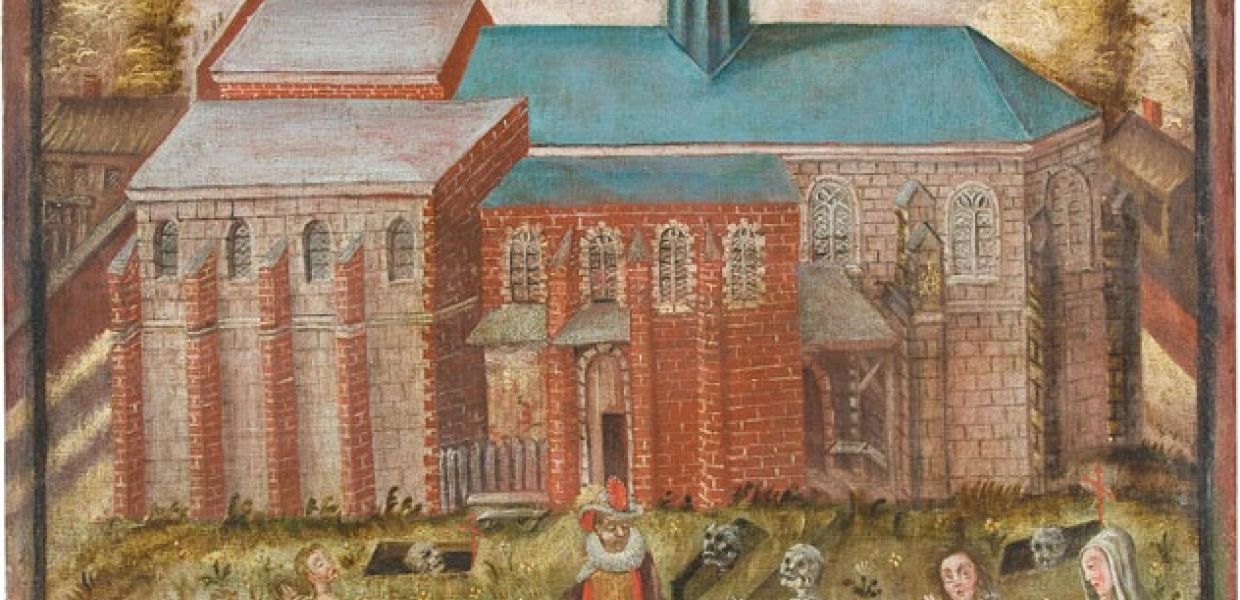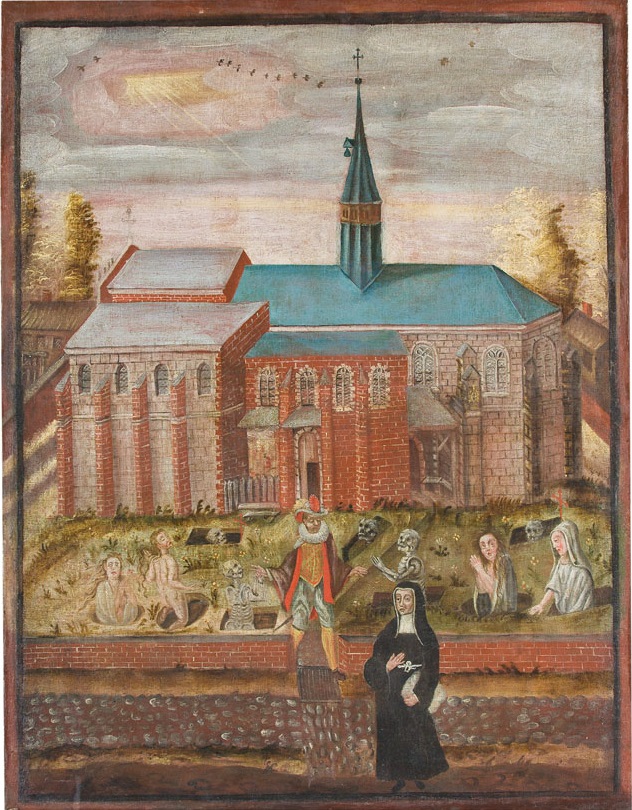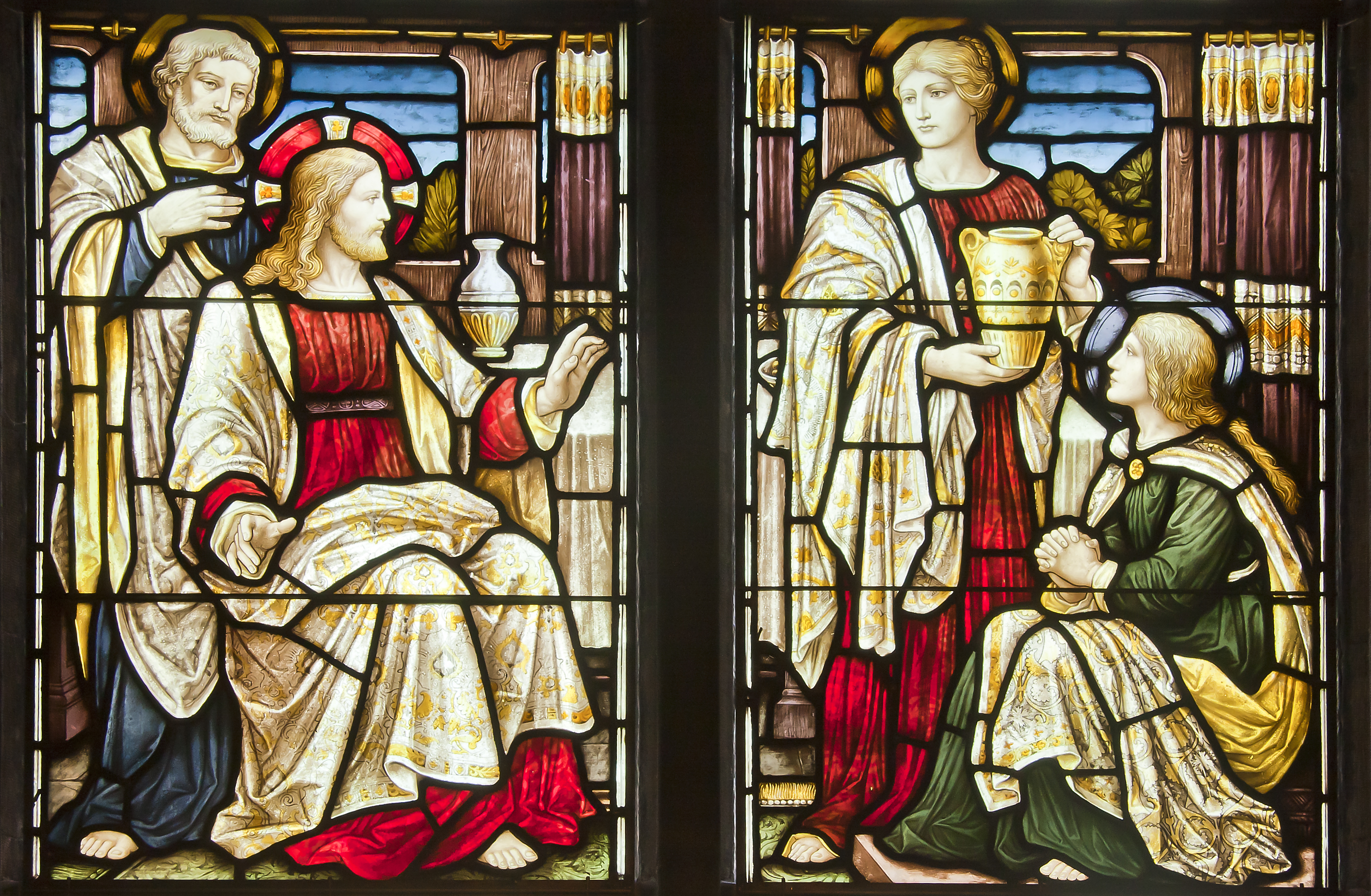Meet the Members Council: Jef Malliet

Hello, I am Jef Malliet. For many years, I have worked in an international environment (at ICCROM, The International Centre for the Study of the Preservation and Restoration of Cultural Property) but I’m now working on a very different scale for the development of a cultural heritage database for a province in Belgium, Erfgoedplus.be. Since 2008 I have been involved with, and closely followed the development of, Europeana - especially through participation in projects that emphasise the contribution of local heritage.

A Folk art representation of a local legend, with a detailed historic representation of a church, now part of a World Heritage site. Image: from Erfgoedplus.be, CC BY SA.
The platform beyond the portal
‘From portal to platform’ – this is one of the key priorities in the Europeana Strategy 2015-2020. These words require interpretation. Their potential is expressed in the Strategy’s title: ‘We transform the world with culture’, a statement that forms the core mission of Europeana. This ambition clearly lies beyond the functionality of the portal alone, and the Strategy makes a start towards envisaging what realising such an ambition might entail. However, as with any starting point, there’s still plenty more untapped potential for us to uncover and explore.
So what can we do to reach the broader goal of transforming the world with culture? What kind of interpretations can we give to this platform beyond the portal? Here are some facets of the platform that I would like to focus on as a Councillor.
The new governance is bottom-up
The new governance structure shifts the decision-making power in Europeana from the large, visionary institutions that started it all to those who have become the real stakeholders by contributing to, aggregating, developing, exchanging, lobbying, and creating the portal. Such empowerment requires work and careful attention to communication and transparency. The new Council is the main instrument to implement this empowerment. Its first task is to engage all Network members into the new governance and to create truly democratic participation.
The power of local heritage
For a number of reasons Europeana is often associated with the masterpieces of each Member State, providing access to seminal works. This was a clear message in ‘The New Renaissance’, the 2011 report of a Comité des Sages appointed by the European Commission.
Of course, the masterpieces and significant treasures of a country will always be important, and will attract political and economic attention too. They certainly can't be omitted, and projects like the new Europeana Art 280 campaign will help place them alongside their lesser-known, but still important counterparts.
However, to fulfill the role and potential of Europeana, I believe it should aim for the participation of an even broader base of stakeholders, and the long-tail power of local cultural heritage is fundamental here.
Local history relates to the places where people live, and to the people they know. The collections held by small local libraries, volunteer associations, and other local communities make local history come to life. It is essential for the identity of local communities and can be connected to broader regional or national histories, helping local communities understand their place and role in ‘history’ and society. It can contribute to better mutual understanding and more respect between communities, and subsequently, create a better, more sustainable intercultural society.

A church window from the Nikolai Church in Örebro. User contributed content, Wikimedia Commons, CC0.
Access to local history most often remains hidden. It takes special effort to enable these communities to contribute their data and knowledge to an aggregation portal. Participation usually requires technical and other professional skills that are not readily available to those involved. Such an inclusive portal needs to be supplemented with appropriate support services. This is the core business of our own Erfgoedplus.be platform and these were also the ideas behind the projects EuropeanaLocal, WP3 of Europeana Awareness, Europeana Inside, LoCloud. ( See, for example, this blog to learn more.)
From technology to processes
The infrastructure, the technology, the data models – these are all necessary tools, but they must be used by people in order to make the platform work. They must be supported by processes and services that make them accessible to collection holders that do not speak the technical language. The platform should allow scalability, not only upwards to a broader scale, but downwards to narrower, local, less expert players too. As these processes are usually developed by the larger institutions, they must be translated and offered at a low-threshold level. I believe this will be a task for aggregators.
For me, this is a priority as the importance of Europeana is wider than just the product itself. As a process, building Europeana has increased the attention to digitisation of heritage in most European countries, and in a spirit of collaboration among domains and disciplines.
From quantity to quality
Over the years, an initial emphasis in Europeana and affiliated projects has been on numbers. A critical mass had to be created in order to gain credibility and appeal. Having reached this critical mass, it now becomes possible to spend more attention on other, less measurable aspects such as quality. Improving data quality is indicated as priority #1 in the Strategy 2020. Data quality needs to be improved in order to make the data richer and to increase re-usability (see this previous blog and Task Force report on the subject).
Data quality has many facets, and can be defined usually only in relation to a particular purpose. There are many reasons for making data about cultural heritage objects available, including archiving it for the future, and re-use by other parties, and rarely do we create information for a single purpose. The overall aim is to ensure it serves all desired purposes.
Going beyond Europeana
Right now, the focus is on the data that reaches Europeana, but the platform opens up more possibilities for improving quality of the source data for other purposes as well. I believe we must try to use the platform of Europeana to influence developments in digital heritage in general. Thinking about quality is an excellent opportunity to do this. It can help promoting proper use of standards, working towards true interoperability across the borders of domains or languages as well as improve the durability of information beyond the parameters of Europeana.
(If you're interested in this last issue, I've written further articles on the topic, 'Quality for Linked Data. What is it and how can it be made?' and 'Open and Linked Data. Elements for a roadmap'.)
